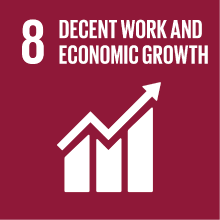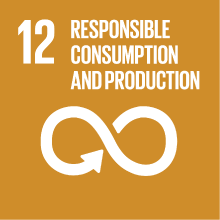CHEMICAL INDUSTRY LEATHER
- Academic year
- 2023/2024 Syllabus of previous years
- Official course title
- CHIMICA DELL'INDUSTRIA CONCIARIA
- Course code
- CM0319 (AF:374581 AR:211944)
- Modality
- On campus classes
- ECTS credits
- 6
- Degree level
- Master's Degree Programme (DM270)
- Educational sector code
- CHIM/04
- Period
- 1st Semester
- Course year
- 2
- Moodle
- Go to Moodle page
Contribution of the course to the overall degree programme goals
Expected learning outcomes
i) Acknowledge the working phases of the tanning process
ii) Acknowledge the relations between chemical transformations and effect on the finished product .
iii) Acknowledge the organic and inorganic chemistry of the various transformation processes used by the tanning industry .
iv) Acknowledge the environmental impact of the process and the alternatives available today both on an industrial and research level.
2. Ability to apply knowledge and understanding
i) Acknowledge how use the concepts learned for forecast and to interpret the chemical reactions involved in a given process.
ii) Analyze in a critical and coherent way related issues in a wider way to the issues developed during the course.
3. Judgment skills
Compatibly with the degree of in-depth study of the subject during the course:
i) knowing how to evaluate comparatively effectiveness of alternative processes available for a given process step
ii) develop a preliminary critical capacity on the danger of some classes of organic compounds for human health and for the environment
4. Skills communication
i) Knowing how to use the appropriate scientific-technical terminology and symbology for an expert in the field.
ii) Being able to interact constructively with the teacher and with the classmates,
5. Learning ability
i) Being able to take notes identifying autonomously the salient aspects of scientific reasoning and the concepts expressed in class
Pre-requirements
It is aimed at students of both Master Degree courses (chemistry and industrial chemistry).
Contents
- Introduction .
Program description, exam mode and bibliography.
- History of the tanning industry .
Historical excursus on the fundamental steps that have characterized the use of leather over the centuries and the methods for developing the various transformation processes, some of which are still used today . Salient aspects of the industrialization of the process and its expansion in Europe.
- Description of the Process scheme .
The industrial process used today is analyzed in its various phases and in particular divided into: riviera work, tanning, retanning, fattening dyeing ( wet end), finishing. The various steps are the subject of in-depth study in the various lessons of the course
- Evaluation of the environmental impact of the process and Environmental Sustainability
The various steps involved in the leather transformation process are analyzed according to the environmental impact deriving from it.
Critical analysis is evaluated and the most innovative and " environmental " alternative systems are reported friendly "in order to reduce overall the environmental impact of the industrial process.
Referral texts
1) "Tanning Chemistry ", The Science of Leather - Anthony D. Covington, RCS publishing ( text available only in English)
2) Sammarco, Umberto " Conciaria Technology" Ed. Editma -Rescaldina (MI) (text available only in Italian).
3) Recent literature and other material will be provided by the teacher.
Assessment methods
The oral exam consists of a series of questions to which the student must answer proving to know and know how to explain the topics of the entire program (see content section) with properties of language and terminology specific characteristic of a chemist expert in the field . The oral test has duration variable from 20 to 30 minutes in reason of the clarity is consistency of the answers toquestions places.
Type of exam
Teaching methods
Teaching language
Further information
Accommodation and support services for students with disabilities and
students with specific learning impairments:
Ca’ Foscari abides by Italian Law (Law 17/1999; Law 170/2010)
regarding support services and accommodation available to students
with disabilities. This includes students with mobility, visual,
hearing and other disabilities (Law 17/1999), and specific learning
impairments (Law 170/2010). In the case of disability or impairment
that requires accommodations (i.e., alternate testing, readers, note
takers or interpreters) please contact the Disability and
Accessibility Offices in Student Services: disabilita@unive.it
2030 Agenda for Sustainable Development Goals
This subject deals with topics related to the macro-area "Circular economy, innovation, work" and contributes to the achievement of one or more goals of U. N. Agenda for Sustainable Development


